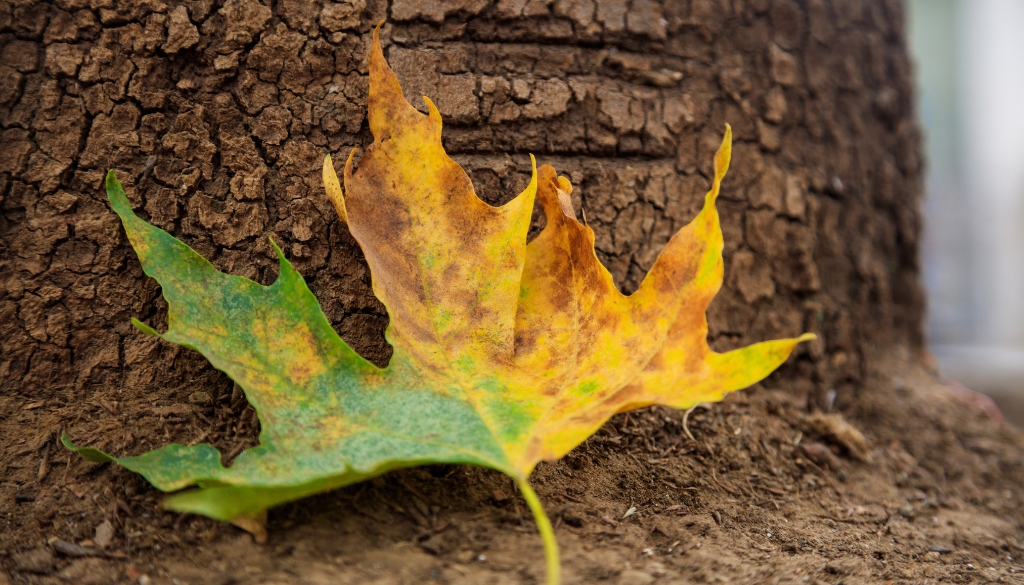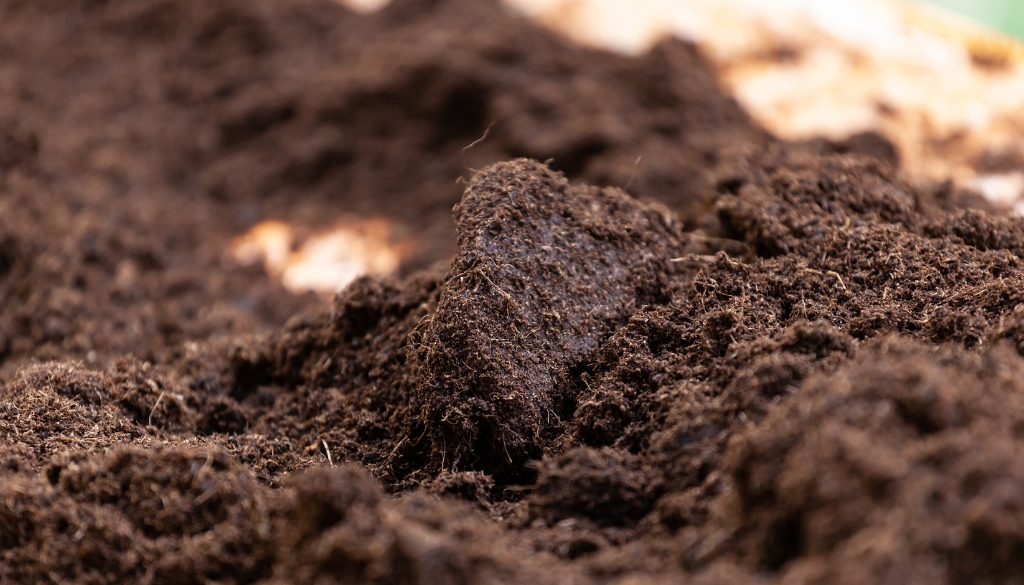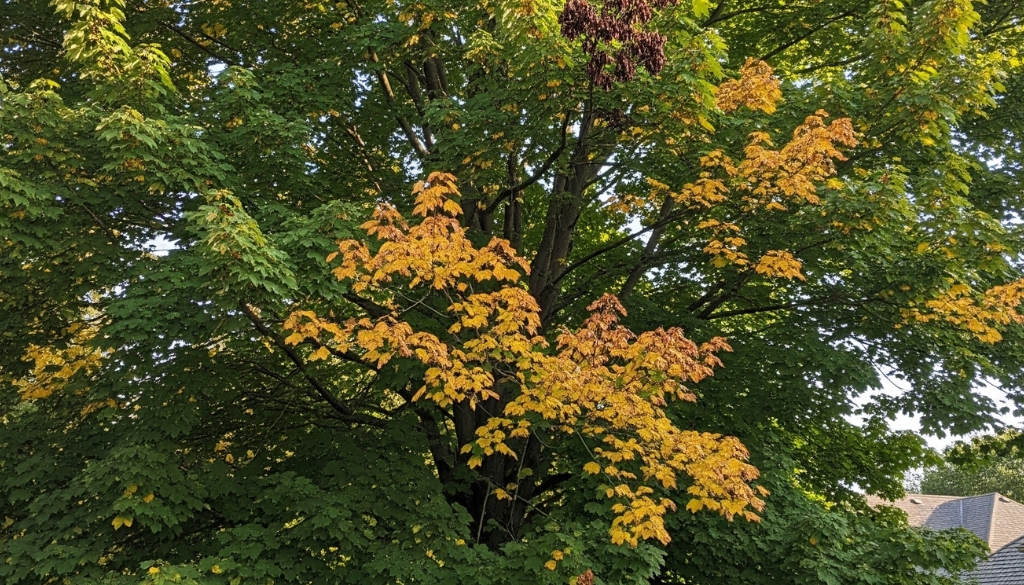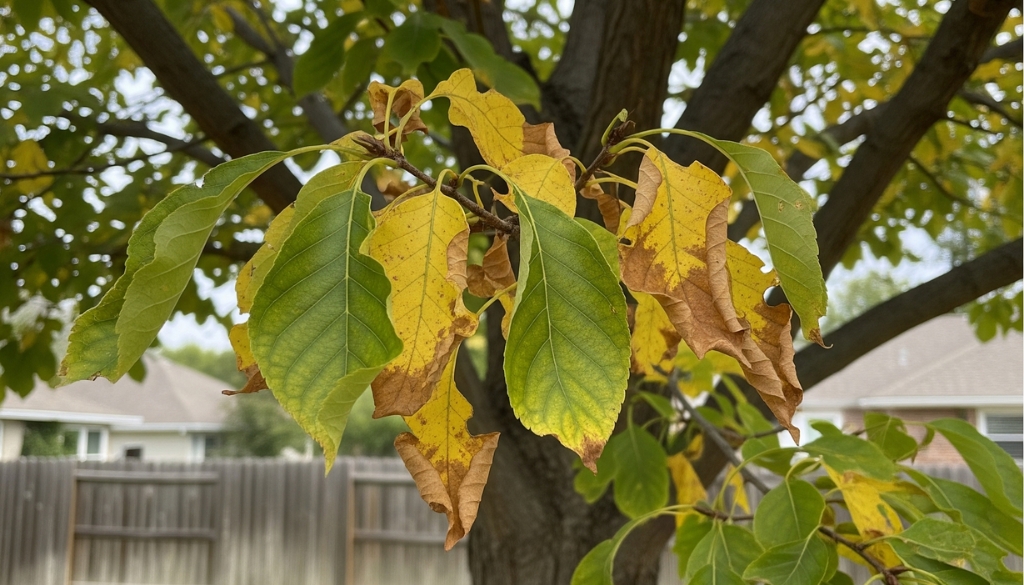If your tree suddenly starts dropping leaves, turning yellow, or looking weak on one side, your tree may have caught verticillium wilt, a soil-borne disease that attacks a tree’s ability to move water through its body.
While it can’t be fully cured, the right care can help slow its progress and keep your tree healthy for as long as possible. We’ll teach you how to spot and manage verticillium wilt in New York trees.
What is Verticillium Wilt?
Verticillium wilt is a fungal disease that lives in the soil and enters plants through their roots. Once inside, it spreads through the tree’s water-carrying tissues, clogging them and making it harder for moisture and nutrients to reach the canopy (leaves). This often leads to wilting, leaf scorch (burned by the sun), and dieback (gradual death of twigs, branches, and leaves).
When verticillium wilt causes too much damage, sometimes the safest option is to replace the tree altogether. If you need help with that process, our New York tree removal services can safely handle the job and clear an area for your new tree!
Appearance
Verticillium wilt doesn’t always affect the entire tree at once. Sometimes one branch or side of the tree looks sick while the other seems fine. Leaves may curl, turn yellow or brown at the edges, and fall early. These are the external signs of the fungus. If you cut into an infected branch, you may notice dark streaks or rings under the bark, which are clearer signs that the fungus is active in your tree.

History
First identified in the early 1900s, verticillium wilt has spread widely across North America. In New York, it’s commonly seen in maples, ash, and elm trees, but it can also affect shrubs and even vegetables like tomatoes and peppers. Since it’s a fungus that spreads through soil, a lot of vegetation and greenery can be affected by the fungus. It can survive in soil for years and continues to be a major challenge for homeowners and arborists in New York.
What Causes Verticillium Wilt?
The disease is caused by Verticillium fungi, which grow in soil. A tree becomes infected when its roots touch the fungus. Stressed trees, those dealing with drought, soil compaction, or injuries, are more vulnerable. Once infected, the fungus blocks the tree’s “veins,” reducing its ability to move water and nutrients to where its needed.

How To Spot Verticillium Wilt?
In New York, where summers can swing from heavy rain to heat waves, symptoms of verticillium wilt can sometimes be mistaken for drought stress. Here’s what to watch for when trying to find clear signs of verticillium wilt:
- Uneven wilting: One section of the tree looks weak, while the rest looks normal.
- Leaf scorch: Leaves have brown edges with yellow halos.
- Early leaf drop: Green leaves fall before autumn.
- Branch dieback: Entire branches may wither and die.
- Discolored wood: Cutting a branch may reveal dark streaks just beneath the bark.
What Can I Do To Remove Verticillium Wilt?
There’s no total cure for verticillium wilt, but you can take steps to limit its impact and give your tree a fighting chance.
Improve Soil Health
Adding compost or organic mulch enriches your soil, supports good microbes, and reduces stress on tree and plant roots. Healthy soil makes a tree more resilient!
Water Deeply and Regularly
New York summers can be tough on trees. Deep, consistent watering, especially during dry spells, helps trees fight the fungus and avoid sickness.
Fertilize with Care
Use a balanced, slow-release fertilizer with low nitrogen. You can create an all-purpose fertilizer using a 10-10-10 ratio of nitrogen, phosphorus, and potassium. If you’re looking for organic options, you can use bone meal, composted manure, or seaweed-based fertilizers. High nitrogen encourages weak growth, which is more vulnerable to disease.
Remove Infected Branches
If you see branches already affected, prune them back carefully. This will guarantee that the sickness doesn’t spread to healthy areas of the tree. Always disinfect tools between cuts so the fungus doesn’t spread further.

Plant Resistant Species
If you’re adding new trees to your yard, choose species less likely to suffer from verticillium wilt. In New York, ginkgo, beech, and many oak varieties show good resistance against this fungus.
Don’t Let The Wilt Win
Verticillium wilt is a serious challenge for New York trees, but it doesn’t have to be the end of your beautiful tree. Spot the symptoms early and you can make sure your tree gets the care it needs as soon as possible. Though we can’t permanently cure verticillium wilt, we can still do our best to help our trees in any way we can!

